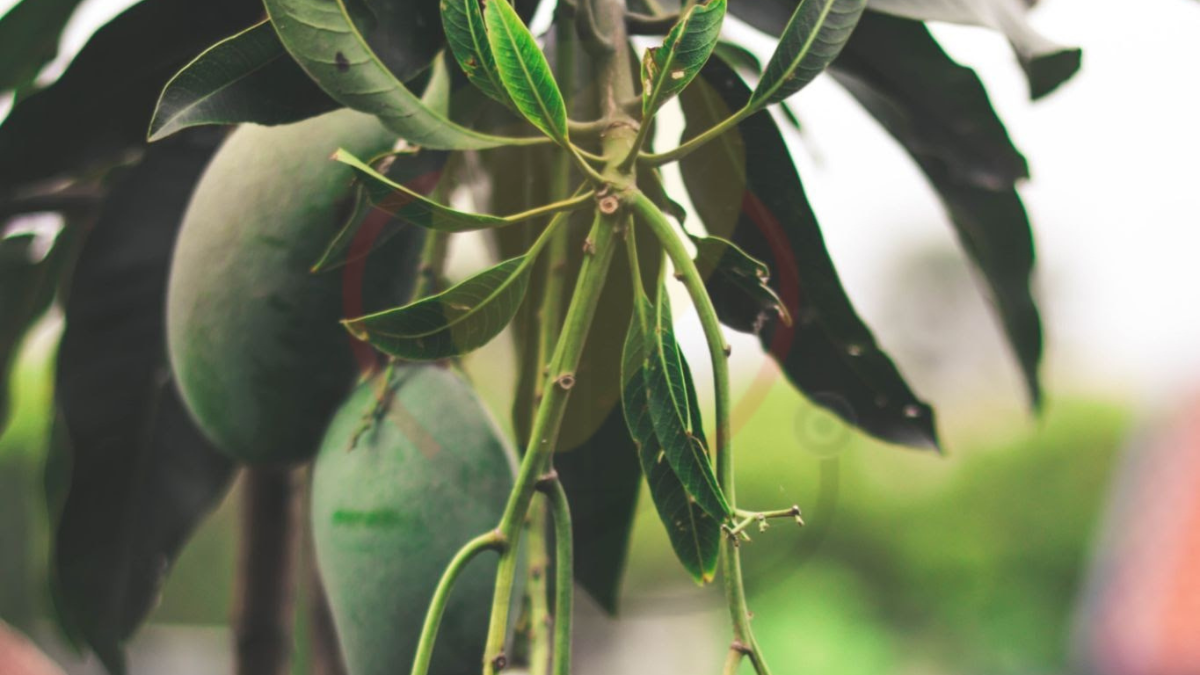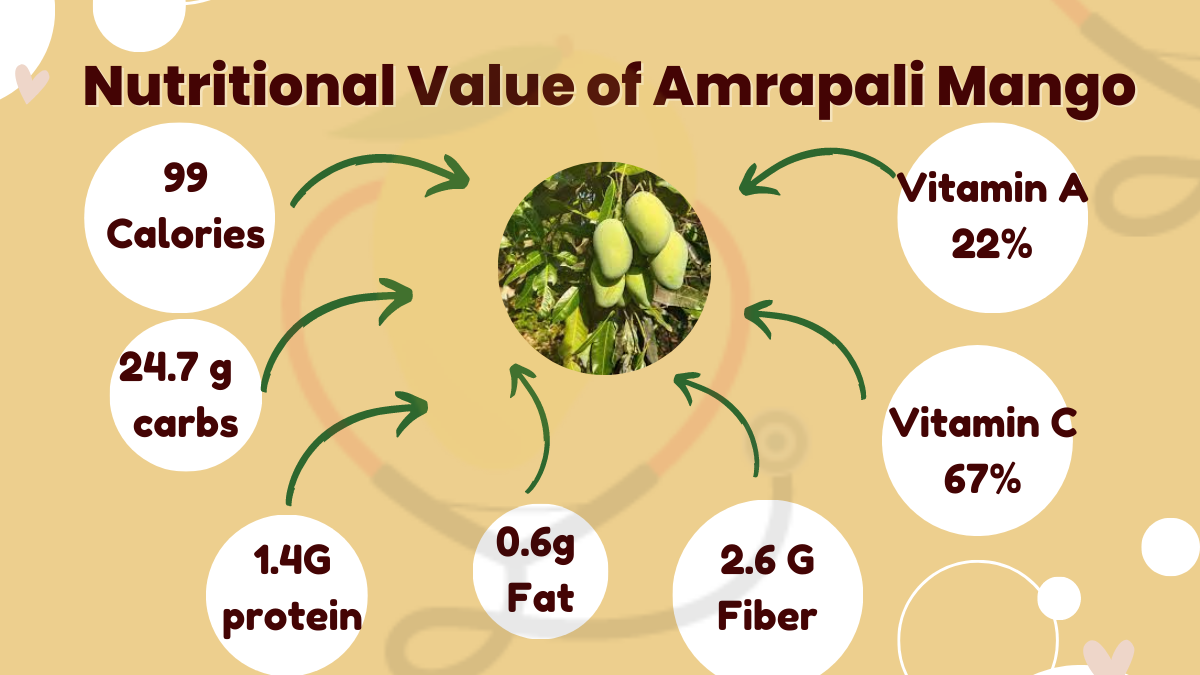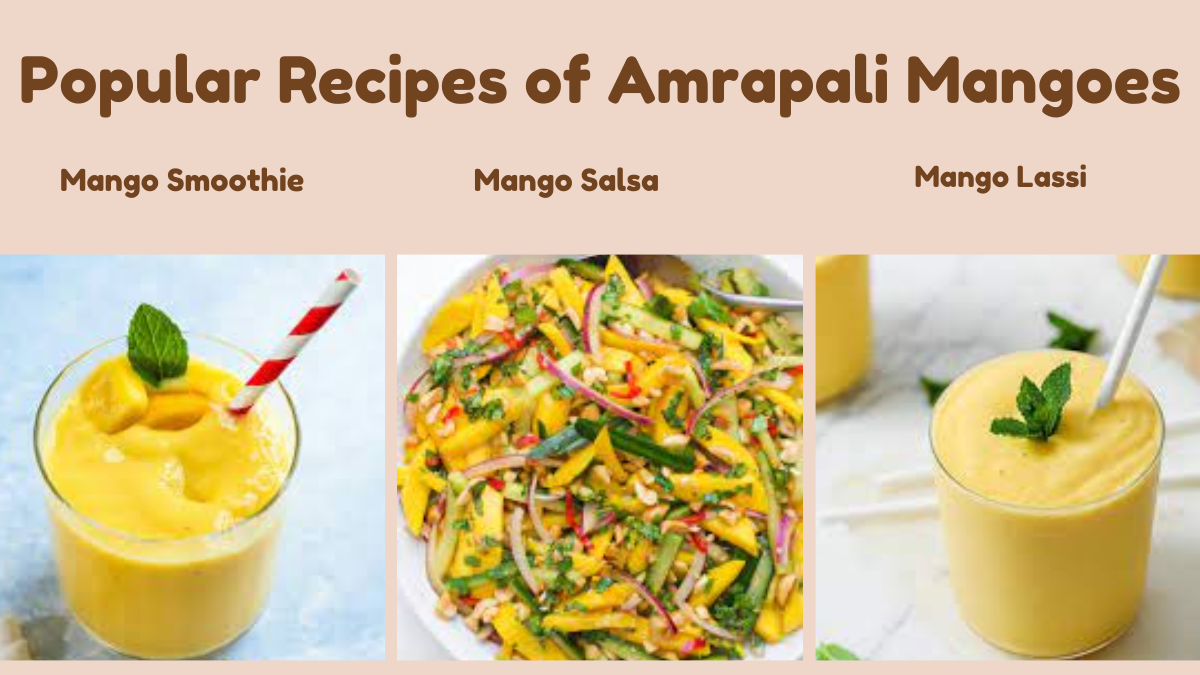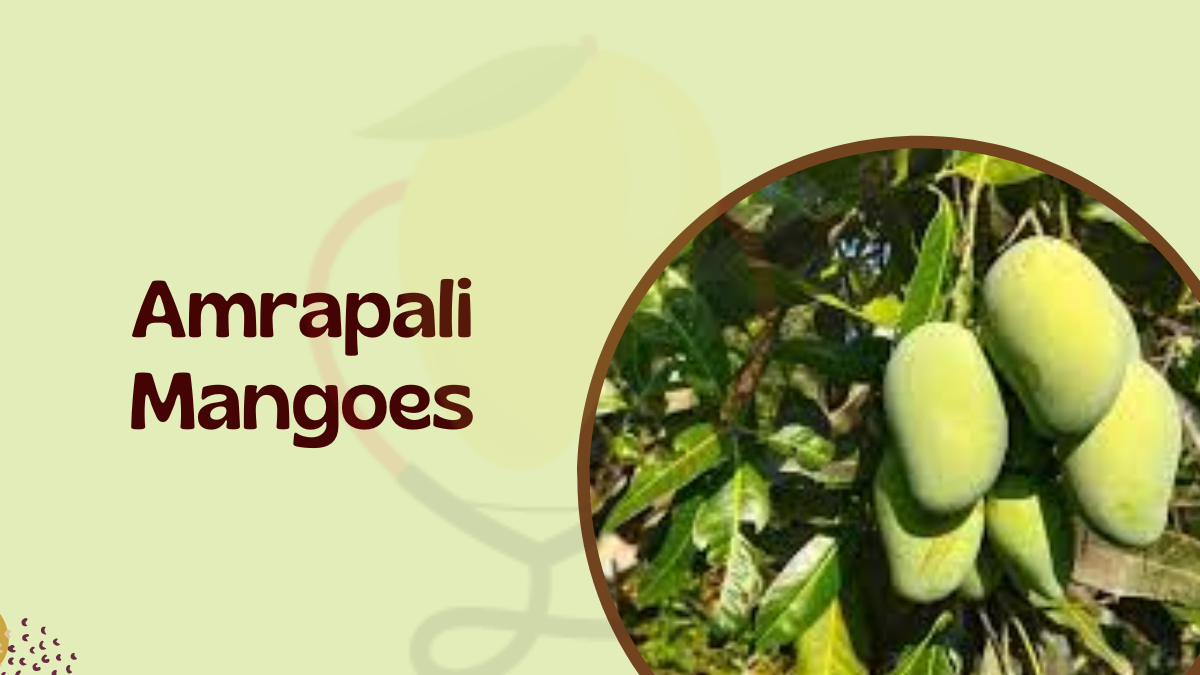Amrapali mangoes are a popular mango variety, known for its distinct aroma and sweetness. [1]
It is considered to be one of the best hybrid mango varieties developed in India.
The fruit is named after the famous courtesan Amrapali, who lived in ancient India.
The mango is mainly grown in the state of Uttar Pradesh, but it is also grown in other parts of India, including Bihar, Haryana, and Delhi.
This article will provide you an overview of Amrapali mangoes, with their origin, characteristics, nutritional values, health benefits, and delicious recipes.

Origin of Amrapali Mangoes
The Amrapali mango was developed in 1971 by Dr. Pijush Kanti Majumdar and Dr. N.G. Desai at the Indian Agriculture Research Institute (IARI).
The IARI is a premier institute for agricultural research in India.
The mango was developed by crossing two varieties of mangoes, namely, Neelam and Dashehari.
Neelam is a popular mango variety grown in southern India, while Dasheri is a well-known variety grown in northern India.
The Amrapali mango was named after the famous courtesan Amrapali, who lived in Vaishali, an ancient city in present-day Bihar.
Amrapali was known for her beauty and charm. She was a skilled dancer and musician, and she was also known for her philanthropy.
The fruit was named after her as a tribute to her beauty and charm.
Characteristics of Amrapali Mangoes
- Amrapali mangoes are medium-sized, weighing around 250-300 grams each.
- The fruit has an oval shape, with a smooth, shiny skin that is green when raw and turns yellowish-orange when ripe.
- The pulp is yellowish-orange, soft, and fiberless, with a sweet aroma and a rich, juicy taste.
- The fruit has a small, flat stone in the center.
Nutritional Value of Amrapali Mangoes
Mangoes are a rich source of vitamins, minerals, and antioxidants. Amrapali mangoes are no exception. One cup (165 grams) of sliced mango contains. [2]

- Calories: 99
- Protein: 1.4 grams
- Carbohydrates: 24.7 grams
- Fat: 0.6 grams
- Fiber: 2.6 grams
- Vitamin C: 67% of the Daily Value (DV)
- Vitamin A: 22% of the DV
- Folate: 18% of the DV
- Potassium: 6% of the DV
Health Benefits of Amrapali Mangoes
Apart from being delicious, Amrapali mangoes offer several health benefits. Here are some of them.

1: Boosts Immunity
Amrapali mangoes are a rich source of vitamin C, [3] which helps in boosting immunity and fighting off infections.
2: Good for Digestion
The high fiber content in Amrapali mangoes aids digestion and helps in preventing constipation. [4]
3: Lowers Cholesterol
Amrapali mangoes are rich in pectin, a soluble fiber that helps in lowering cholesterol levels in the body. [5]
4: Good for Skin and Hair
The high content of vitamin A in Amrapali mangoes helps in maintaining healthy skin and hair. [6]
5: Reduces Risk of Cancer
The antioxidants present in Amrapali mangoes have been found to have anti-cancer properties, which helps in reducing the risk of certain types of cancer. [7]
Culinary Uses of Amrapali Mangoes
Amrapali mangoes are versatile and can be used in a variety of dishes. Here are some popular culinary uses of Amrapali mangoes.
Mango Juice
Amrapali mangoes are perfect for making mango juice, which is a popular drink in India.
Mango Lassi
Mango lassi is a popular Indian drink made with mangoes, yogurt, and sugar.
Mango Salsa
Amrapali mangoes can be used to make mango salsa, which is a great accompaniment for grilled meats and fish.
Mango Chutney
Amrapali mangoes can be used to make sweet and tangy mango chutney, which is a popular condiment in Indian cuisine.
Amrapali Mangoes and Other Varieties
Amrapali mangoes are often compared with other popular varieties of mangoes in India, such as Alphonso, Kesar, and Totapuri.
While each variety has its own unique characteristics and taste, Amrapali mangoes are known for their rich flavor and aroma, making them a popular choice among mango lovers.
Popular Recipes of Amrapali Mangoes

Here are a few delicious recipes that you can make using Amrapali mangoes.
Amrapali mangoes are not only delicious but also offer several health benefits.
They are a versatile fruit that can be used in a variety of dishes and have gained popularity worldwide.
Like any other crop, Amrapali mangoes face various challenges, and farmers have to take several measures to ensure high-quality produce.
With the increasing demand and popularity of the fruit, it is expected that the production and consumption of Amrapali mangoes will continue to rise in the future.
FAQs
What is the season for Amrapali mangoes?
The Amrapali mango season usually starts from May and lasts till July.
What is the best way to consume Amrapali mangoes?
Amrapali mangoes can be consumed as a fruit, used in juices, smoothies, salads, and various desserts.
How can I tell if an Amrapali mango is ripe?
A ripe Amrapali mango will be slightly soft to touch and have a sweet aroma.
Can Amrapali mangoes be grown in other countries?
Yes, Amrapali mangoes have been exported to various countries and are now grown in some regions outside of India.
What are the nutritional benefits of Amrapali mangoes?
Amrapali mangoes are a rich source of vitamins A and C, fiber, and antioxidants, which offer several health benefits such as boosting immunity, aiding digestion, and reducing the risk of certain types of cancer.

